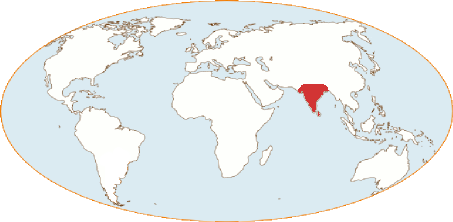The sura-beer and the coming of Indo-Ârya between 1500 and 1300 BC.
The Indo-Ârya enter around 1500 BC in successive waves the Indian subcontinent from the North-West, the current Tajikistan and Northern Pakistan. Originating from the great plains of Central Asia, these Indo-European speakers are related to the Iranians who evolved before that time east of the Caspian Sea. Breeders and semi-nomads, they rely on the relative mobility allowed by their herds and life in tents. Their military superiority is based on the horse and the chariot. They are organised into tribes or clans that wage war on each other or make alliances for their military conquests.
Nomadic pastor-warriors are not expected to carry a beer culture. They do not a priori cultivate cereals. Their ritual drink, the Soma, is more similar to psychotropic vegetable juices than to fermented alcoholic beverages. Their clan society has no need of the complex mechanisms to redistribute grains and beverages, except the rules governing the sharing of booties of grains grasped from the farmers' granaries.Their food stocks are their herds on the move, their wealth consist mostly of precious metal they carry with them in the form of jewellery, ornaments, weapons, chariots or the richly decorated harnesses of their horses.
What happens when these warring tribes meet the sedentary farmers of the Indus valleys, who are supposedly brewers and beer drinkers? The birth of one of the world's most brilliant civilisations, the cradle of Vedic tradition and Hinduism. If we believe the Mahabharata which tells of events that took place between the 10th and 8th centuries, this civilization was born in blood, the fury of fights and spiritual energy.
The Indo-Ârya progress slowly following the courses of the Sutlej, the Indus and its tributaries, in the great fertile semi-flooded plain cleared by the peoples who preceded them. Their arrival has nothing to do with a lightning and destructive conquest. The confrontation with the Dasa lasts at least 5 centuries. The Dasa are heirs of the great civilisation of the Indus, bearers of its agricultural and village techniques. The Dasa are undoubtedly, at that time, cousins of the Dravidians of South India, although the question remains debated. The Vedic texts speak of the dark-skinned Dasa and the light-skinned Indo-Arya.
The oldest Vedic texts glorify the powers of great deities. Among them, Soma embodies Nature, plants, fertility. To serve his cult, two beverages compete with each other. The first is eponymous. The soma has a central place in Vedic rituals. Its composition (psychotropic plants, milk, fruits), its preparation (obtaining vegetable juices), its consumption (closed circle of officiants) reflect the way of life of nomadic breeders[1]. The soma is related to the Haoma described by the Avesta, the sacred text of the Indo-Iranians who populate a vast region coinciding with the origin of the Aryas tribes..
The second beverage, named sura, is a beer. Its composition (barley/wheat), its brewing (alcoholic fermentation), its consumption (extended group of the faithful) borrow from the way of life of the sedentary heirs of the Indus farmers. In Vedic culture, beer-sura is the beverage of the warriors/leaders (the kshatriyas according to the classification given by the Vedas). According to the text of the Rig-Veda, soma is a divine decoction, sura a human beverage. However, the Yajur-veda deifies the sura-beer and elevates it to the same status as the drink-soma. Is this the effect of a social evolution, of the later drafting of the Yajur-veda? Or a consequence of two distinct religious and social traditions?
The coexistence of these two types of beverage (psychotropic vs. alcoholic) is not uncommon in human history[2]. The uniqueness of the Indus case lies in the ancientness of the rich Vedic literature that describes these two emblematic beverages, the soma-decoction and the sura-beer.
Soma = sacred juice of the semi-nomad herders for the use of priests, warriors and their visions, based on plants and dairy. Some descriptions and uses of soma allude to its psychotropic effects.
Sura = beer of the ancient settlements of the Indus, the fermented beverage of the grain farmers, villagers who have long settled in the great Indus basin and its tributaries.
We make the hypothesis that a type of beer equivalent to the sura-beer was brewed in the basin of the Indus before the arrival of the Indo-Iranians whom the Vedic texts call Ârya.
However, these same Indo-Iranian semi-nomadic pastoralists were able to rub shoulders with or integrate brewing peoples from Central Asia during their long migration eastwards from the shores of the Caspian Sea to the banks of the Indus. The question will remain open as long as excavations in the Indus basin or in the north of present-day Pakistan do not provide evidence of an ancient indigenous brewing tradition, having existed between 2900 and 1500 BC, i.e. before the arrival of the Indo-Iranians.
[1] Wasson R. Gordon 1968, Soma : Divine mushroom of immortality. Ingalls Daniels 1971, Remarks on Mr. Wasson's Soma. JAOS 91-2. Mahdihassan S. 1984, Soma As Energizer-Cum-Euphoriant, Versus Sura, An Intoxicant, Ancient Science of Life Vol. III-3 January, 161-168.
[2] Ancient Scandinavian, Central Asian or Amerindian traditions ensure the coexistence of fermented beverages and energising preparations such as plant decoctions to drink, plants to smoke, breathe or ingest, mushrooms, cactus flowers and so on. Thus, there is no mutual exclusion between these two categories of beverage, soma and sura




